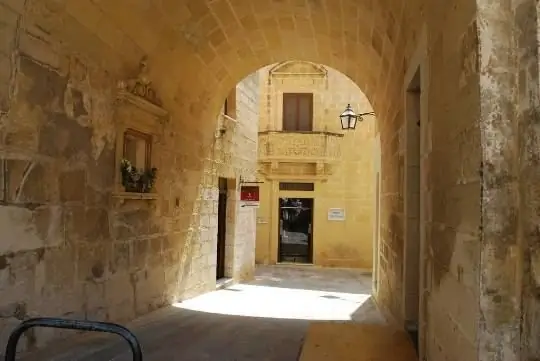
Description of the attraction
On the territory of the Citadel in the old Bondi Palace, built in the 17th century, there is the Archaeological Museum of the Island of Gozo. This museum was founded in 1960 and at the time was called the Museum of Gozo. It was renamed after the 1989 reconstruction.
The Archaeological Museum is considered the most important cultural institution on the island of Gozo. It features archaeological finds and various relics illustrating the history of the island of Gozo from prehistoric times to the present.
The first floor of the museum is dedicated to artifacts from the Neolithic period, when megalithic temples were built on the island, and the Bronze Age (5200-700 BC). In the glass cases you can see ceramic vessels, stone and bone tools, jewelry found during excavations of various settlements and burials. Particular attention should be paid to the objects found on the Shara plateau and in the Jgantiya temple complex.
On the second floor there are relics dating from the times of the Phoenician, Punic, Roman rule and the period of the reign of the Knights of the Order of St. John. These are ancient coins, marble sculptures, jewelry for clothes, oil lamps, and objects of religious worship. Punic inscriptions made in the 2nd century BC are also kept here. NS. They report on the construction and restoration of the sanctuaries.
The founders of the museum also paid attention to the times of Arab rule on the island of Gozo. Here you can see the tombstone of the 12-year-old girl Maimuna, on which the date is engraved - 1173. Interestingly, a pagan sign is visible just below the inscription. This allows us to conclude that the Muslims used stones left over from pagan sanctuaries for their needs.






